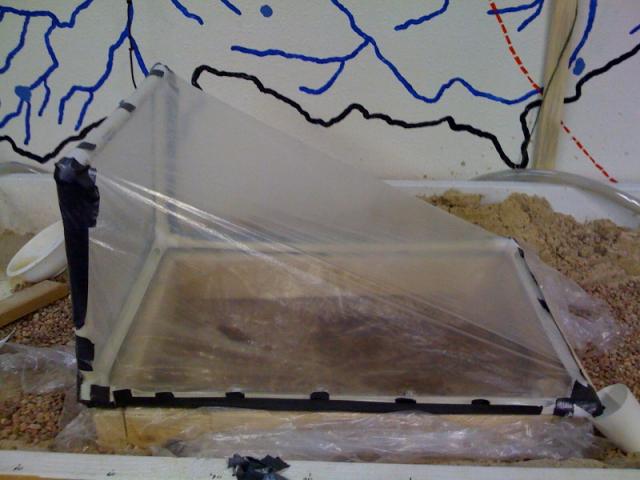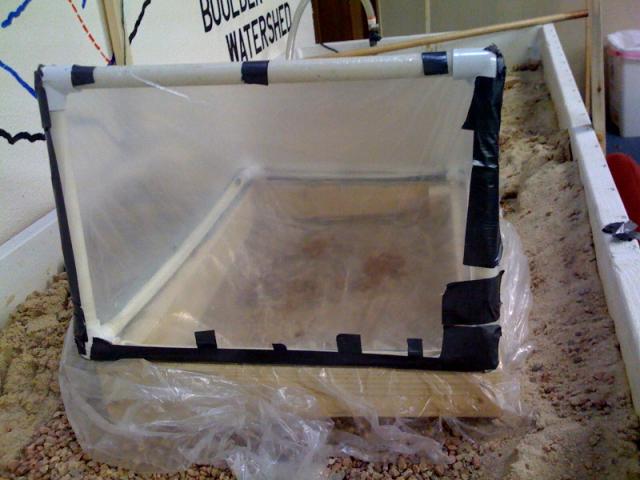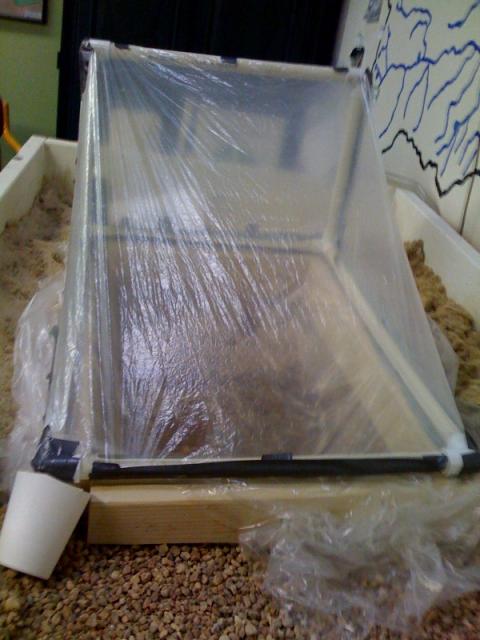Contributed by Eva Johnson, Watershed School, Boulder, Colorado, USA.

fig 1: Rough Dimension sketch
Materials Required
- Five 1/2" PVC pipes each cut to 16 inches.
- Two 1/2" PVC pipes each cut to 24 inches.
- Four 2-ended PVC connectors.
- Two 3-ended PVC connectors.
- A 2ft. by 4ft. transparent tarp (plastic sheet).
- A 2ft. by 3ft. transparent tarp (plastic sheet).
- Duct tape
Construction Method
The Still is built with 1/2" PVC piping (two 18" sides, two 24" sides) with one of the 18" sides built up 16" taking a right angle shape. (connected with PVC connectors) The bottom PVC pipes are cut to act like gutters. A transparent plastic tarp stretches from the bottom of the tall side up over and down across to the low end, making a slope in the tarp. Because this is a cheap project, duct tape is used to attach the tarp. One corner of the base is risen so it's taller than the others, making the opposite corner the lowest. At the lowest corner, a hole is drilled underneath in the PVC connector, so if water was to fall into the gutters, by gravity it would flow down to the lowest end and run out of the hole.Underneath the whole still, another tarp is laid down to hold the unpure water that will soon be evaporated.
So if a person was to pour some of the dirty water from a river underneath the solar still, sunlight would heat the still and cause the water to evaporate. Once evaporated, the water will hit the top and sides of the tarp and drip down into the gutters. Because the frame of the still is slanted, the water in the gutters will flow down to the bottom corner and out the hole where it can be collected and used


fig 2: side view of Still fig 3: Back view of still

fig 4: Front view of Still
/articles/solar-still